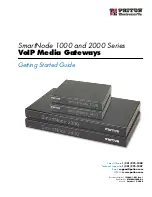
Wireless location requirements for optimum performance
All wireless devices in your system must be located in such a way that they can reliably receive
and/or transmit wireless signals.
A number of factors can influence wireless performance. For example, physical obstacles and
certain vessel structures and materials can all negatively impact wireless performance. Therefore,
it’s important to check a product’s wireless performance at the desired installation location
before drilling any mounting holes
.
Vessel construction and materials
Wherever possible, mount products on surfaces constructed from GRP (e.g. fibreglass resin, or
foam), or on dry wooden bulkheads.
Conductive materials in the signal path can have a significant impact on wireless signal
performance
. Reflective surfaces such as metal surfaces, some types of glass and even mirrors can
drastically affect performance or even block the wireless signal. Installation locations that are in close
proximity to these materials should be avoided.
Do NOT mount wireless products directly to
conductive materials.
This includes any mounting surface or enclosure/pod.
Examples of conductive materials include, but are not limited to:
• carbon fibre, kevlar, or aramid (including sails made from these materials)
• aluminium
• steel
In installations with conductive materials, mount the wireless product using an accessory pole mount
or deck mounting kit. A clearance of at least 10 cm (3.9 in) is required to minimize the ground effect
from conductive materials. This applies to transmitters as well as displays. If moving the product fixes
the problem, consider cutting an antenna clearance hole behind the unit (once the product position
and mounting have been finalized).
Wireless performance can also be degraded in locations where the wireless signal passes through a
bulkhead containing power cables.
Note:
Crew members (especially when wet) can also be obstructive to wireless signals, if their bodies
pass through the signal area between wireless sensor and any associated displays.
Checking and optimizing signal strength
It may be necessary to experiment with the location of your wireless products to achieve optimal
wireless performance and a clear signal path.
The distance between wireless products should always be kept to a minimum. Do not exceed the
maximum stated range of your wireless product (maximum range will vary for each device).
Wireless performance degrades over distance, so products farther away will receive less network
bandwidth. Products installed close to their maximum wireless range may experience slow
connection speeds, signal dropouts, or not being able to connect at all.
For best results, the wireless product should have a clear, direct line-of-sight to the product it will be
connected to. Any physical obstructions can degrade or even block the wireless signal.
Some wireless products feature a signal strength indicator to assist in the process of determining
the location with the best wireless performance. Choose the location with the highest and most
consistently strong direct signal reading, during a 5 minute monitoring period. Try alternative
locations for the transmitter to maximise the signal strength to the displays; e.g. try locations below a
hatch or skylight or near to a window. A small change in product position can result in a significant
change in the signal strength.
Note:
Some wireless products (e.g. a Hull Transmitter) will not transmit data unless a transducer is
connected. Also consider that an NMEA or SeaTalkng product (e.g. an interface) will not transmit
data unless an appropriate data source is connected.
Interference and other equipment
Interference from other people’s wireless devices can cause interference with your products. You
can use a third-party wireless analyzer tool / smartphone app to assess the best wireless channel to
use (e.g. a channel not in use or one used by the least number of devices).
27
Содержание MICRO-TALK
Страница 2: ......
Страница 4: ......
Страница 8: ...8...
Страница 12: ...12...
Страница 21: ...Chapter 4 Parts supplied Chapter contents 4 1 Parts supplied on page 22 Parts supplied 21...
Страница 23: ...Chapter 5 Product dimensions Chapter contents 5 1 Product dimensions on page 24 Product dimensions 23...
Страница 24: ...5 1 Product dimensions 24...
Страница 25: ...Chapter 6 Location requirements Chapter contents 6 1 Selecting a location on page 26 Location requirements 25...
Страница 40: ...40...
Страница 62: ...62...
Страница 68: ...68...
Страница 78: ...78...
Страница 80: ......
Страница 83: ......
















































